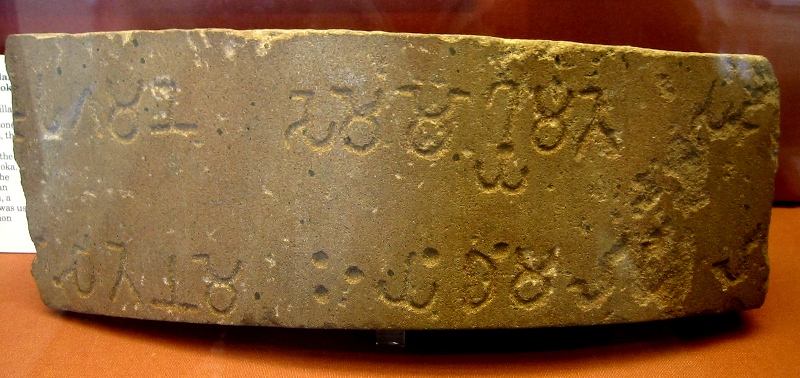Ashoka pillar with an inscription from Sarnath
Edicts of Ashoka
The Edicts of Ashoka are a collection of 33 inscriptions on the Pillars of Ashoka, as well as boulders and cave walls, made by the Emperor Ashoka of the Mauryan dynasty during his reign from 269 BCE to 231 BCE. These inscriptions are dispersed throughout the areas of modern-day India, Nepal and Pakistan and represent the first tangible evidence of Buddhism. The edicts describe in detail the first wide expansion of Buddhism through the sponsorship of one of the most powerful kings of Indian history. According to the edicts, the extent of Buddhist proselytism during this period reached as far as the Mediterranean, and many Buddhist monuments were created.
- These inscriptions proclaim Ashoka's beliefs in the Buddhist concept of dharma and his efforts to develop the dharma throughout his kingdom. Although Buddhism and the Buddha are mentioned, the edicts focus on social and moral precepts, rather than specific religious practices or the philosophical dimension of Buddhism.
- In these inscriptions, Ashoka refers to himself as "Beloved of the Gods" and "King Priya-darshi." The identification of King Priya-darshi with Ashoka was confirmed by an inscription discovered in 1837. The inscriptions found in the eastern part of India were written in the Magadhi language, using the Brahmi script. In the western part of India, the language used is closer to Sanskrit, using the Kharoshthi script, one extract of Edict 13 in the Greek language, and one bilingual edict written in Greek and Aramaic.These edicts were decodified by British archeologist and historian James Prinsep.
- The inscriptions revolve around a few recurring themes: Ashoka's conversion to Buddhism, the description of his efforts to spread Buddhism, his moral and religious precepts, and his social and animal welfare program.

Fragment of the 6th Pillar Edicts of Ashoka (238 BCE), British Museum.
